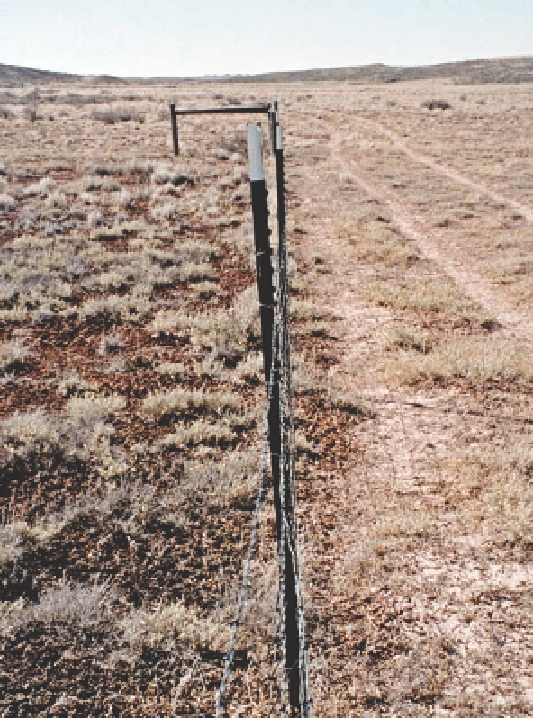Geoscience Reference
In-Depth Information
the best examples of soil crusts in Wyoming have been
found in the relatively warm, desert-like parts of the
Bighorn Basin (fig. 7.15).
Because of the dramatic changes in the sagebrush
ecosystem that can be brought about by poorly man-
aged livestock grazing, some ecologists have concluded
that, in contrast to grasslands on the Great Plains to the
east, the plants of the sagebrush steppe did not evolve
rationale is that the environment was unfavorable for
large herds of bison because of summer drought and the
fore, food to sustain lactating cows was less available
during the summer. Biotic crusts might have formed
under these conditions, where bison populations were
low. When cattle and sheep became abundant in the
late 1800s, trampling would have destroyed the crusts,
causing the soil to become more erodible and more suit-
able for the invasion of introduced weedy annuals, such
as cheatgrass.
But does this scenario apply to the higher elevation
landscapes of Wyoming, where the accounts of early
explorers suggest that bison were common in sage-
brush-dominated landscapes? During midsummer in
1832 and 1833, nathaniel Wyeth observed buffalo by
the hundred thousands in the vicinity of South Pass
and Big Sandy creek—where sagebrush would have
been abundant. At one point he noted that the coun-
try was “covered with buffalo.” in the same area, Jason
Lee wrote in 1834 that “the buffaloe [
sic
] have eaten
nearly all the grass.” near crowheart in the Wind River
Basin, fur trapper James clyman wrote about “Buffalo
plenty” and how a thousand or more bison were killed
on one november day in 1823. in the Green River
Valley, in 1811, Wilson Price Hunt wrote, “We were
surrounded by mountains in which were disclosed
beautiful green valleys where numerous herds of bison
graze; which made them much more interesting to us,
because, for several days, we had not seen a single one
of these animals.”
87
As noted, biological soil crusts are easily destroyed
by hooved mammals, whether bison or livestock. Such
crusts are found in Wyoming, but not as commonly as
in the Great Basin—possibly because of livestock graz-
ing since the late 1800s, or possibly because there were
more bison in Wyoming prior to the arrival of livestock.
Fig. 7.15. Microphytic soil crusts cover the soil between shrubs
in this grazing exclosure in the Bighorn Basin east of Grey-
bull. the common shrub in the exclosure is winterfat, which
is characteristic of desert shrublands (see chapter 8). Soil crusts
tend to occur more often in drier areas and are less common
in Wyoming than in the Great Basin to the west. Photo by
Jennifer Muscha.
phenomena, explaining the effects of grazing requires
an understanding of the interaction of several factors.
Grazing pressure can also cause a decline in biologi-
cal crusts on the soil surface of some intermountain
(formerly known as blue-green algae), lichens, algae,
mosses, and fungi. they minimize erosion, facilitate
nutrient cycling, and create favorable conditions for
seedling establishment. Possibly, the crusts were less
common in Wyoming than in the Great Basin to the
west, because of a higher level of herbaceous plant cover
that attracted more bison and pronghorn, or because
temperatures were too low at the higher elevations
when adequate soil moisture was available. thus far,

Search WWH ::

Custom Search